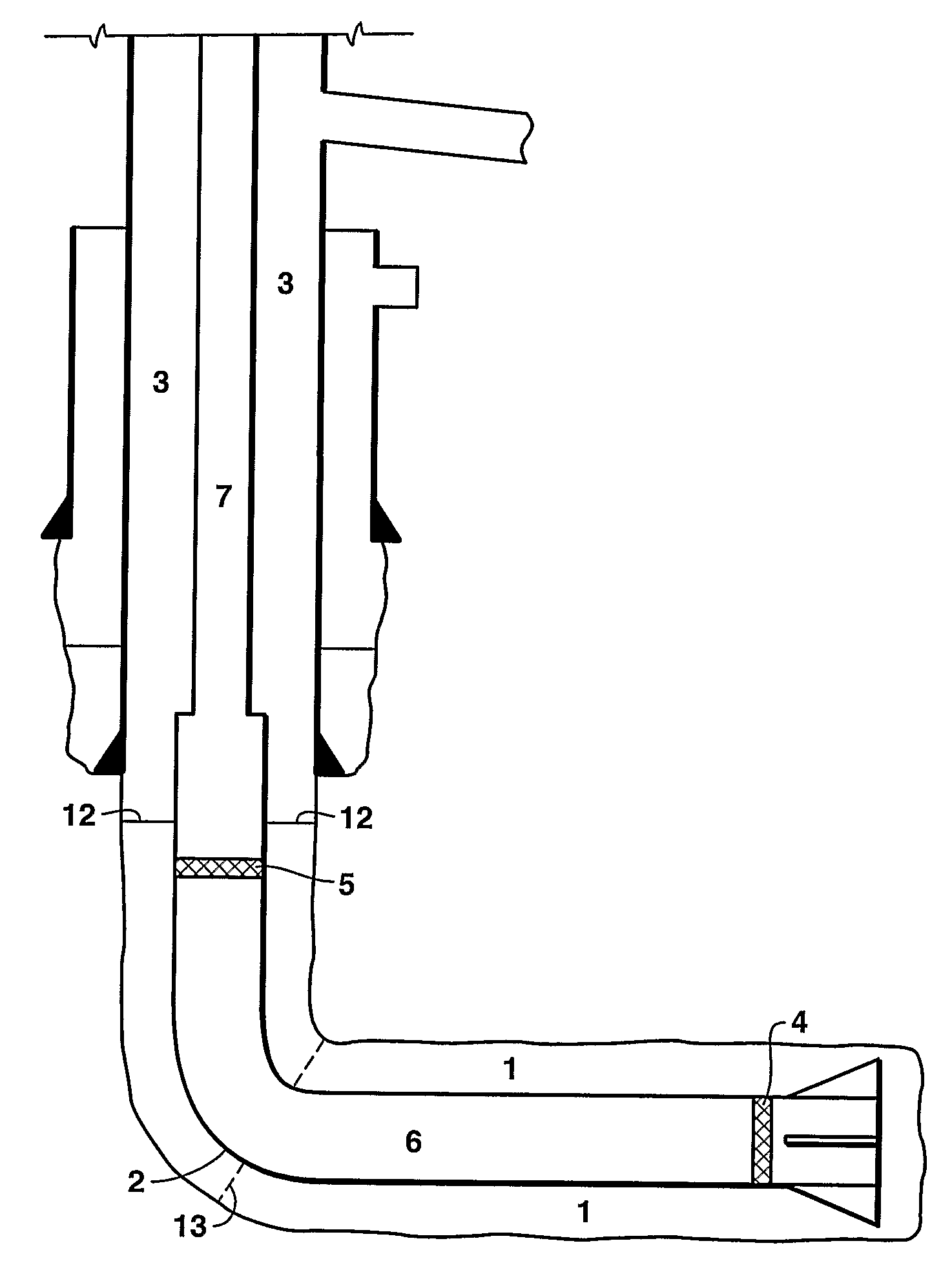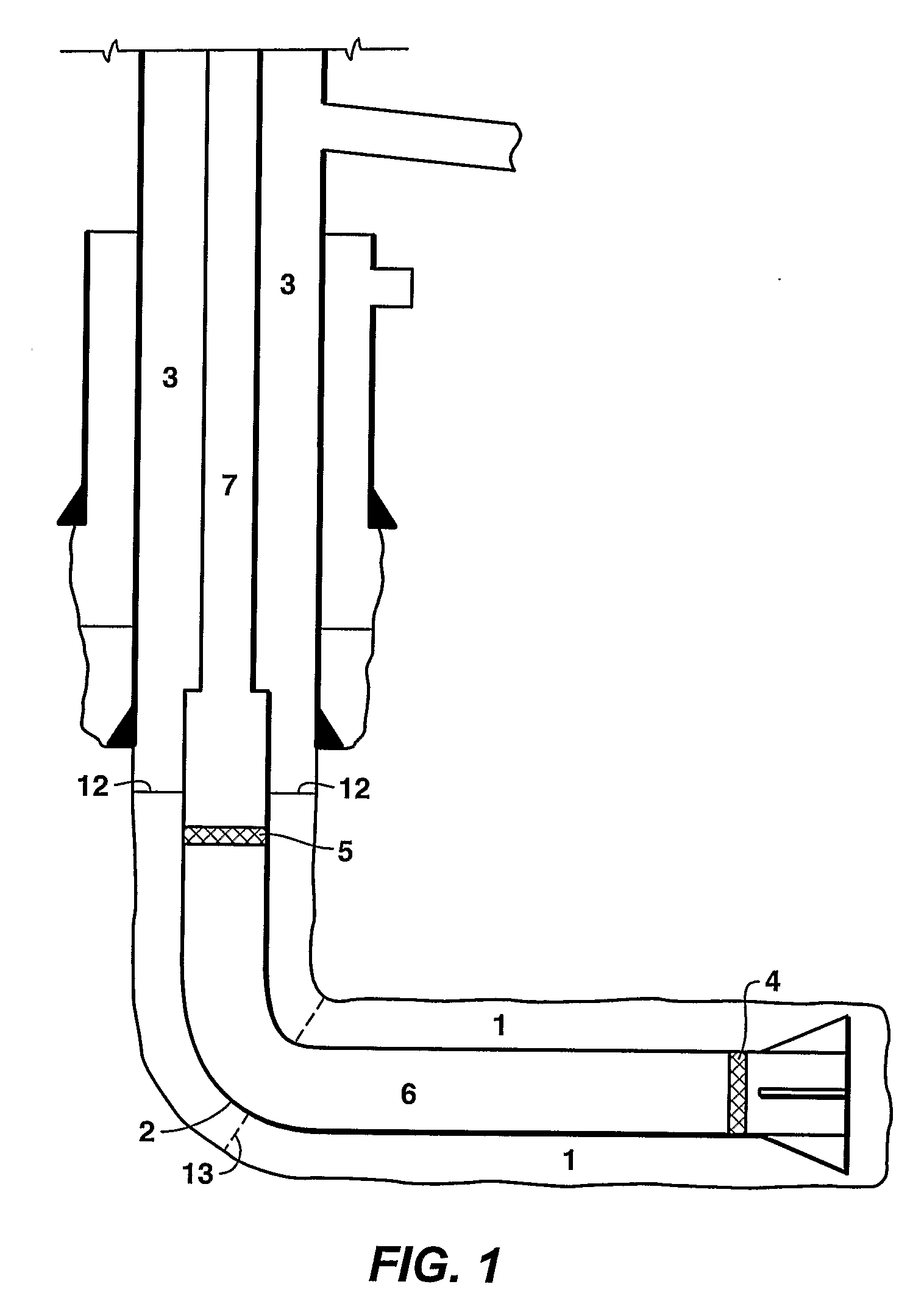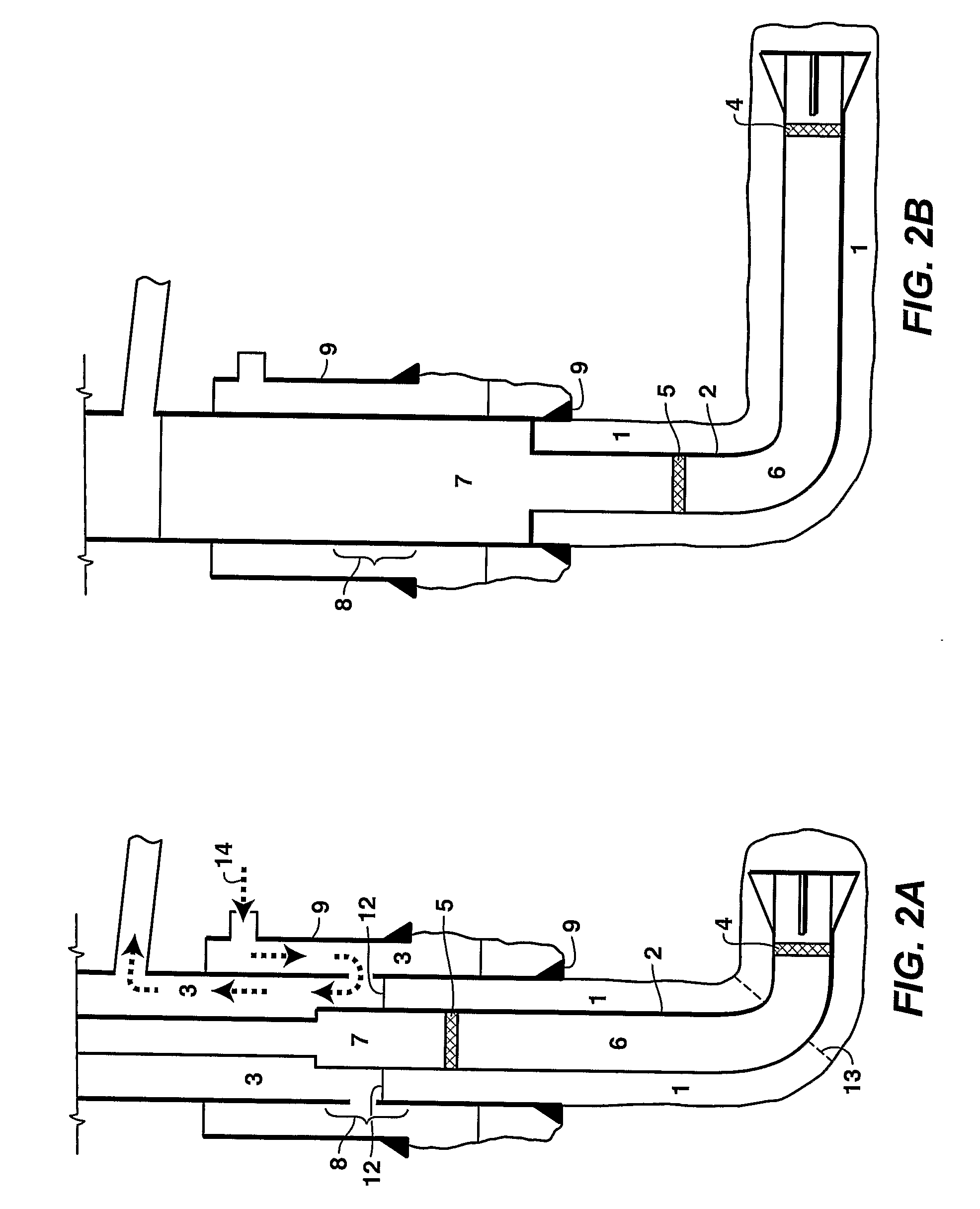Method for Running Tubulars in Wellbores
a wellbore and tubular technology, applied in the direction of directional drilling, wellbore/well accessories, sealing/packing, etc., can solve the problems of uneconomical oil and gas capture, inability to run the casing or liner into the well, and none of the methods to reduce the friction coefficient can reduce the coefficient to zero, so as to reduce the drag acting
- Summary
- Abstract
- Description
- Claims
- Application Information
AI Technical Summary
Benefits of technology
Problems solved by technology
Method used
Image
Examples
Embodiment Construction
[0029]The present invention will be described in connection with its preferred embodiments. However, to the extent that the following description is specific to a particular embodiment or a particular use of the invention, this is intended to be illustrative only, and is not to be construed as limiting the scope of the invention. On the contrary, it is intended to cover all alternatives, modifications, and equivalents that are included within the spirit and scope of the invention, as defined by the appended claims.
[0030]This invention provides a method for buoyancy-aided insertion of a tubular into a long or high-angle wellbore by controlling the density of the external (annular) fluid. In one embodiment, the fluid density is controlled such that the tubular or conduit, including coiled tubing, is essentially neutrally buoyant in the high-angle portions of the wellbore and negatively buoyant in the low-angle portions of the wellbore. The process is further facilitated by using conve...
PUM
 Login to View More
Login to View More Abstract
Description
Claims
Application Information
 Login to View More
Login to View More - R&D
- Intellectual Property
- Life Sciences
- Materials
- Tech Scout
- Unparalleled Data Quality
- Higher Quality Content
- 60% Fewer Hallucinations
Browse by: Latest US Patents, China's latest patents, Technical Efficacy Thesaurus, Application Domain, Technology Topic, Popular Technical Reports.
© 2025 PatSnap. All rights reserved.Legal|Privacy policy|Modern Slavery Act Transparency Statement|Sitemap|About US| Contact US: help@patsnap.com



